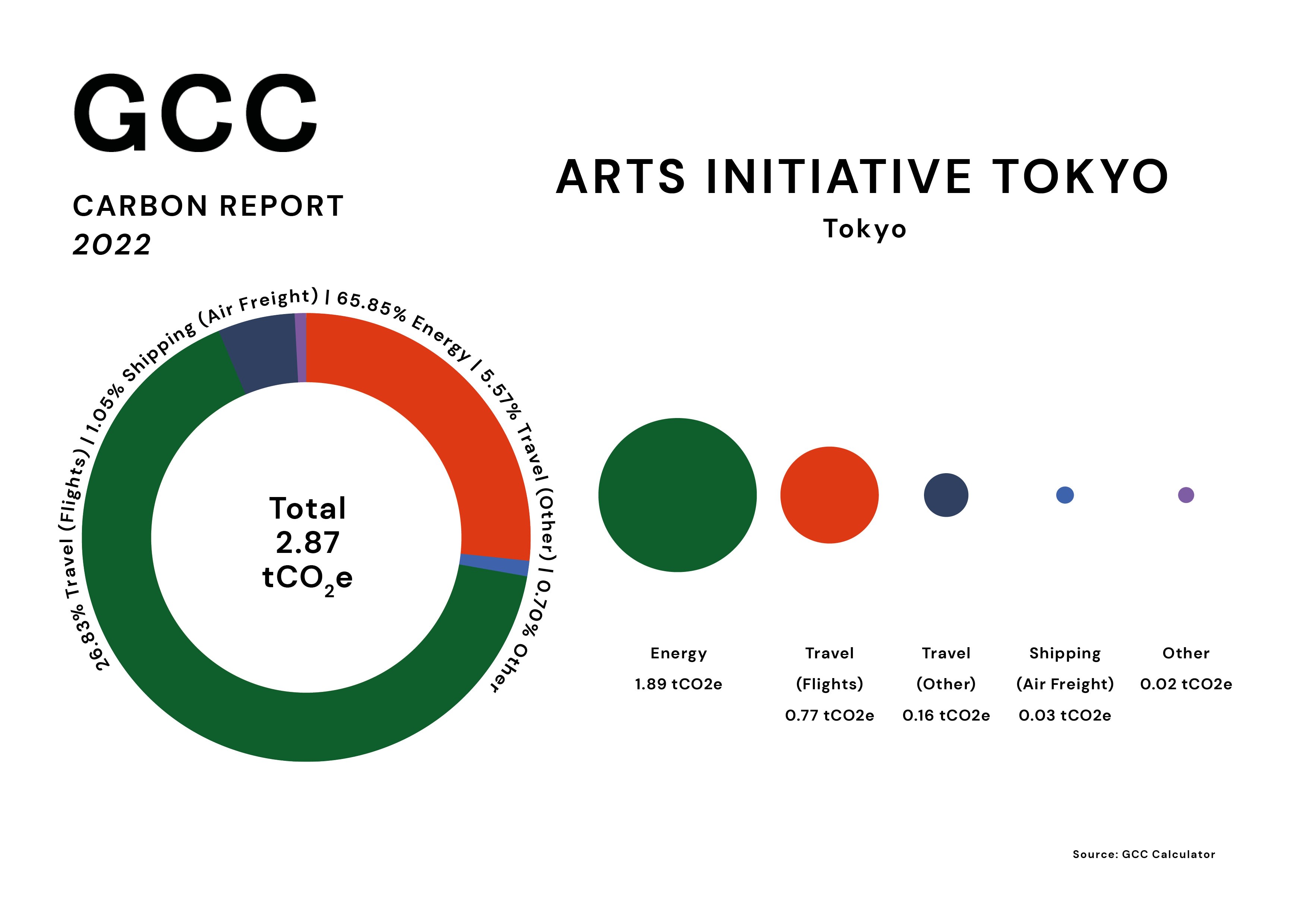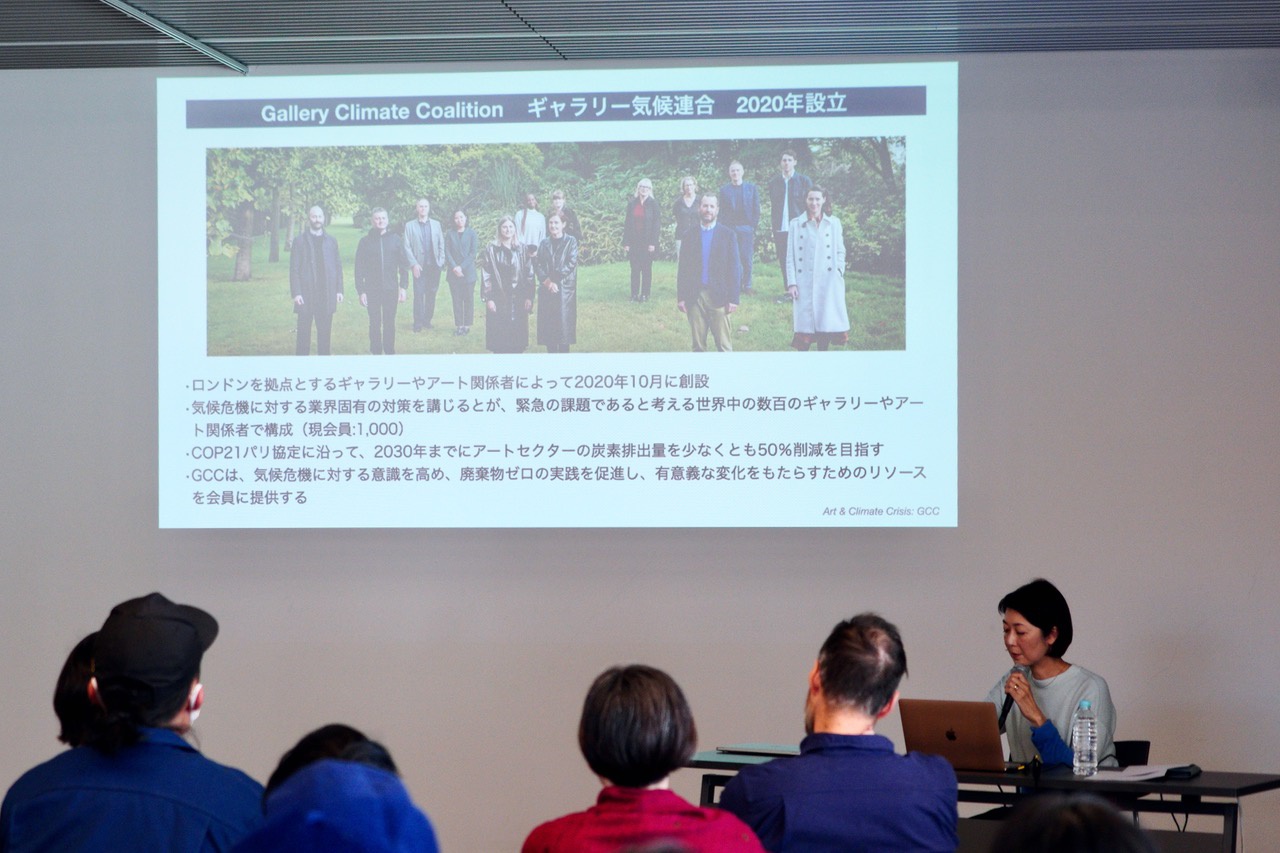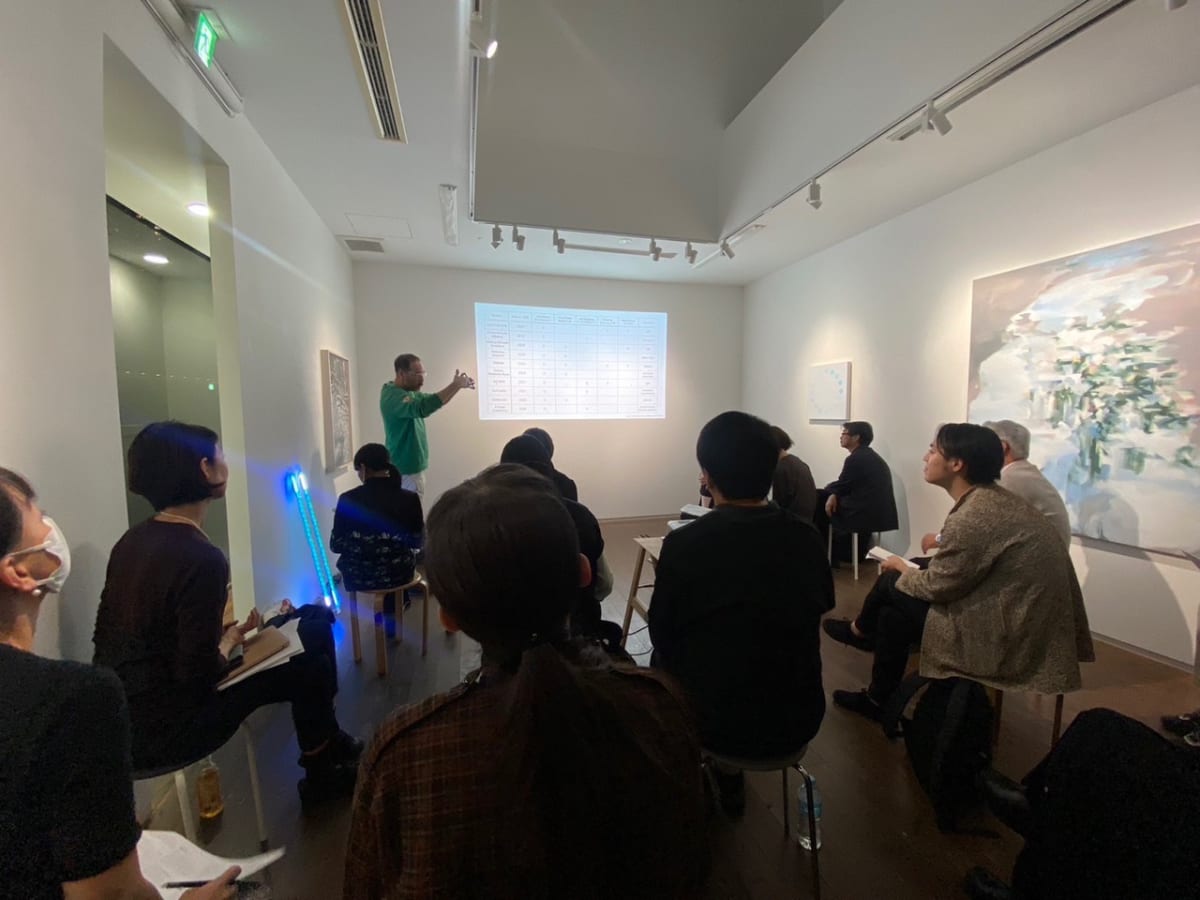Member Case Study: Arts Initiative Tokyo
Arts Initiative Tokyo is a small non-profit that promotes learning and dialogue in contemporary art. Since 2018, AIT has focused on raising awareness of environmental action and the climate crisis in its local community.
Founded in 2001, AIT is still run by a small team and is located in Japan’s capital. AIT engages with the local art community, offering an artist residency, which hosts 4-5 artists every year; partnering with business and local governments on arts initiatives; and running a learning programme aimed at working people.
Five years ago, as AIT’s projects grew, Program Director Roger McDonald began to think more seriously about the climate crisis.
‘I became re-energised personally—I think, looking back, this was when the English language media globally really started picking it up, particularly through Greta [Thunberg]’s strikes and other popular protests,’ he says.
McDonald and the team began to look around to see whether anyone else in the arts was working on environmental issues. In 2021, AIT joined GCC, and last year became part of the first cohort of Active Members.
As an organisation deeply rooted in its local community, AIT has been confronted with differing levels of engagement in the climate crisis in Japan.
‘We found that the immediate issue we came up against was basically a lack of awareness,’ McDonald says.
There were also some tensions between Japan’s wider role in the climate crisis and its cultural and artistic traditions.
Japan is the world’s seventh-largest emitter of greenhouse gases, but the country also has a long tradition of an appreciation of nature.
‘There are constant contradictions and ambiguities,’ McDonald says. ‘Japan has a great historical and cultural tradition of being a very aesthetic and nature-based society, at least when it comes to the fine arts.’
Since beginning its environmental work in earnest, AIT’s focus has been on calculating its own carbon emissions and raising awareness among Tokyo’s wider art community.
When it came to calculating their own footprint, energy was the highest source of emissions for the organisation, who have a team of six and a small office in central Tokyo.

AIT made its first calculation during the early Covid pandemic, and the team found that the unusual context actually helped them to envisage alternative ways of working.
‘It actually ended up being an interesting case study on how we can operate,’ McDonald says. The team has continued to reduce staff travel to the office by continuing remote work and ending the practice of daily commuting.
Interestingly, when calculating their footprint, the team found that their own operational impact was relatively small—but that the emissions generated through projects would make their overall impact much higher.
As a result, the team has tried to centre environmental considerations in all of their projects from the very beginning.
‘What joining GCC has really made us aware of is that, when we work with an organisation, we always bring the environmental aspect to the table,’ says McDonald. ‘I think we have a responsibility, as a member of GCC, to always try to influence or even lobby our partner organisations. That’s something we’re constantly thinking about–how we can inject into all the projects we do.’
Addressing the impact of international flights to their residency programme is also a challenge, but the team hope to promote a more conscious approach to booking travel.
‘Japan being an island nation, flying is a key way of accessing the world,’ McDonald says. ‘We can’t necessarily just stop all flying, but I think about the message Tino Sehgal made in his interview with GCC–travel more consciously. I think that’s something everyone can follow.’
AIT also has some examples of encouraging and rewarding artists who avoid taking the plane. In 2019, IASPIS in Sweden, one of AIT’s residency partners, offered an incentive for artists to travel by land, and AIT welcomed Swedish artist Aron Landahl, who travelled to Tokyo via the Trans-Siberian railway.
‘That was a really interesting case study for us,’ McDonald says. ‘He took a week coming and a week back, and he just treated the train like a mobile studio.’
Beyond their own carbon reductions, another important emphasis for AIT is community building within Japan and bringing together the art community.
In 2022, the team began a series of ‘green meetings’, which welcome professionals from across the art world to connect and discuss concrete actions.
The third green meeting will take place at the Mori Art Museum in February, and the reach is increasing.
‘We’re slowly generating much more interest,’ McDonald says. ‘After just three sessions, it’s growing rapidly.’

Yuko Shiomi giving a keynote presentation and introducing GCC at the Arts and Climate Action Symposium event held at Nagano Prefectural Museum, November 2023, organised by Arts Initiative Tokyo. Photo courtesy Arts Council Shinshu.
Within this work, McDonald wants to build on an artistic tradition in Japan that focuses on nature and the environment and translate this into concrete action on emissions reductions.
‘Artists in Japan since the 1960s and 1970s have made great work about ecological issues,’ McDonald says. ‘That is really important, but often there’s very little discussion of looking at our actual footprint. We’re trying to open up the debate to these more immediate and practical concerns.’
As part of this, AIT has also secured funding to translate the Decarbonisation Action Plan, which they hope to complete this year.
Moving forward, the team wants to continue to grow a network in Japan, and to connect with the global conversation about art’s role in the climate crisis.
Regular meetings, laying the groundwork, and slowly building awareness have been key for AIT’s work, both when it comes to addressing their own emissions and engaging with the community.
‘Our very first green meetings were more about learning about climate issues, just coming together and raising awareness, and then going through the GCC website, coming across other Japanese sources, and just slowly increasing our knowledge,’ McDonald says.
What advice would the AIT team have for any organisation wanting to get started in building their own network?
‘I’d say, just putting together a committed green team and having regular meetings will create a very strong root foundation on which other things can slowly build,’ McDonald says.
-
Our Member Case Study series highlights stories from across our sector that show the climate action that’s taking place every day. We’d like to thank our featured members for generously sharing their successes, their challenges, and their plans for the future.
Are you a GCC member and want to share your story? Get in touch! We’d love to hear from you.

